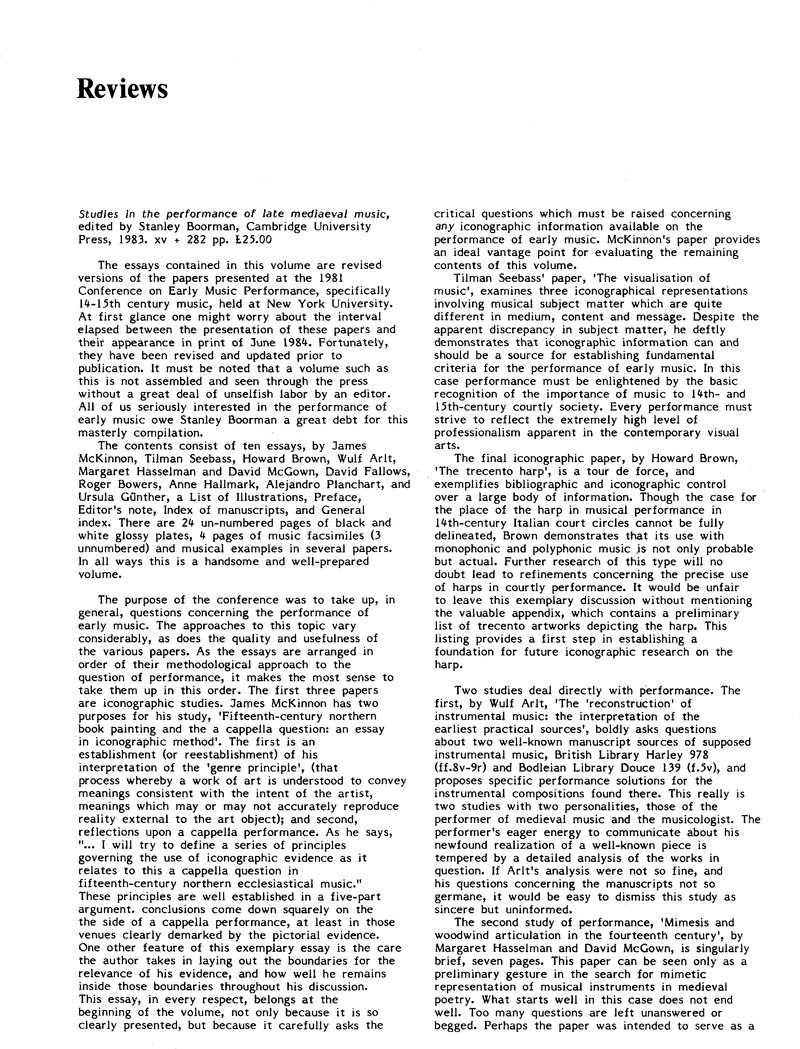No CrossRef data available.
Published online by Cambridge University Press: 14 July 2009

[1] ‘The effect of monasticism on fourteenth-century English music’, Report of the Thirteenth Congress of the International Musicological Society, Strasbourg, 1982, forthcoming.
[2] Summers, William John: The Repertory of Three-Voice Music Notated in Score from Fourteenth-Century England: English Discant and Free Settings (2 vols., Ph.D. dissertation, University of California, Santa Barbara, 1978), especially pp.65–277 Google Scholar, where an inventory of voice ranges is supplied for all the then known three-voice settings. One might like to examine, for example, just two works not mentioned by Bowers that deviate significantly from his general rules for voice-range: the Deo gratias on f.4v of Durham Cathedral Library C.I.20, where the lowest voice drops to G and extends well beyond an octave above; and the Gloria Spiritus et alme from Durham Cathedral, Dean and Chapter Muniments, Communars Cartulary, flyleaf, which has two lower voices with exceptionally wide ranges. These examples are not totally isolated, and should have been dealt with as significant works within the three-voice repertory.
[3] For an assessment of the total number of score format works available, see Summers, William John: English Fourteenth-Century Polyphony: Facsimile Edition of Sources Notated in Score (Tutzing, 1983), pp.13, 25–35 Google Scholar; and ‘Unknown and unidentified 14th-century English polyphonic music’, Research Chronicle of the Royal Musical Association 19 (1983), pp.57–67 Google Scholar. For reference to newly discovered score format compositions and motets as well as an inventory of the 14th-century motet, see Lefferts, Peter M. and Bent, Margaret: ‘New sources of English thirteenth- and fourteenth-century polyphony’, Early Music History 2 (Cambridge, 1982), pp.273–362 Google Scholar, and Lefferts, Peter Martin: The Motet in England in the Fourteenth Century (2 vols., Ph.D. dissertation, Columbia University, 1983)Google Scholar.